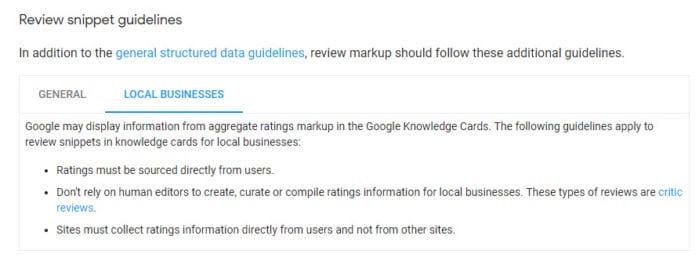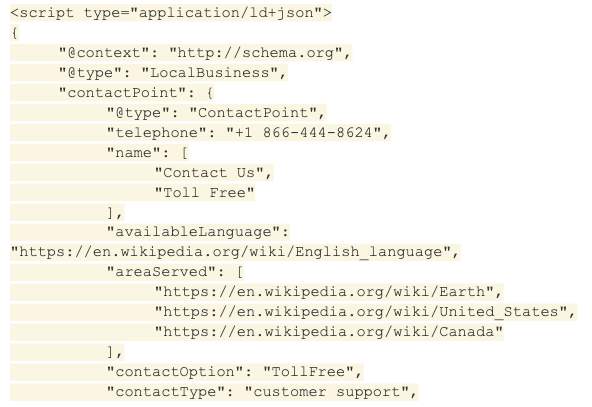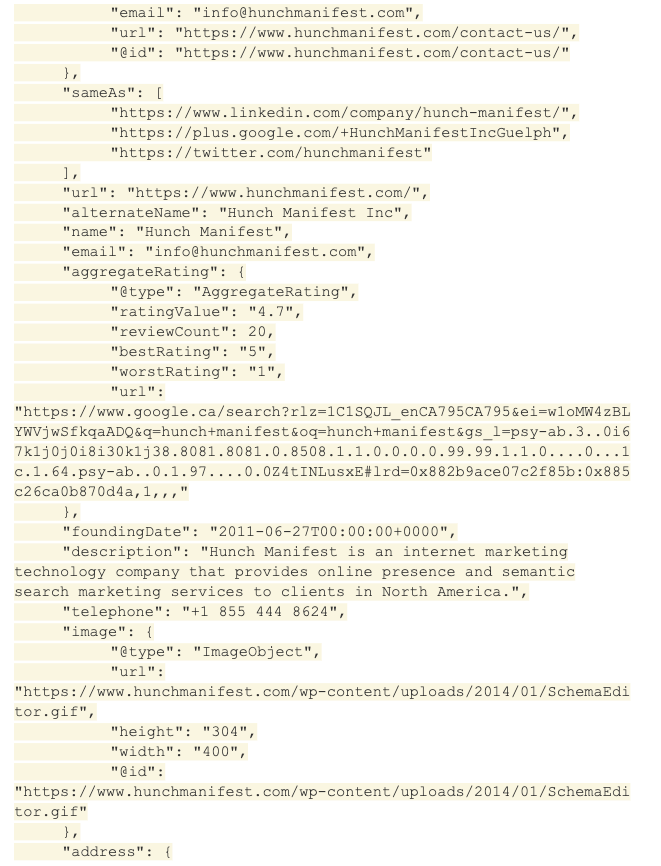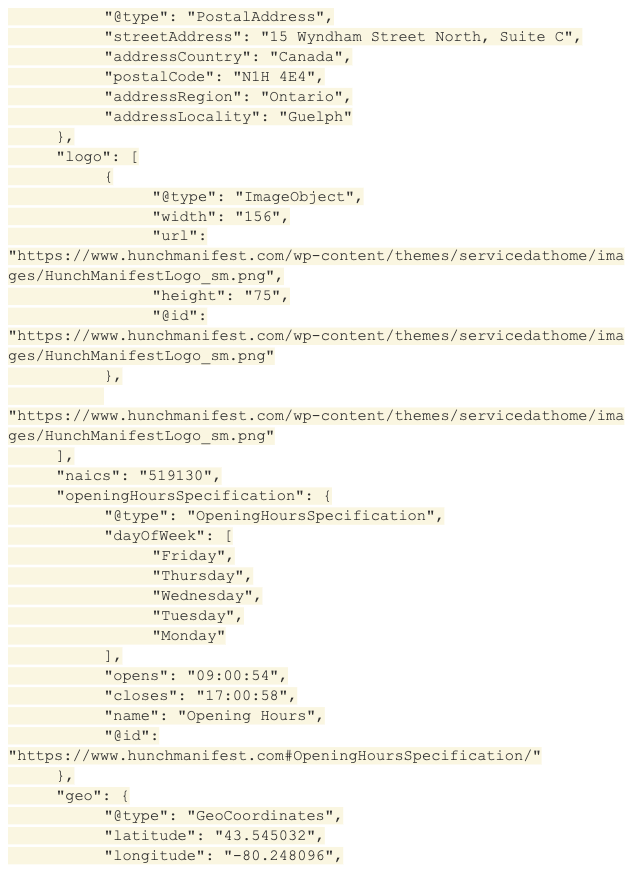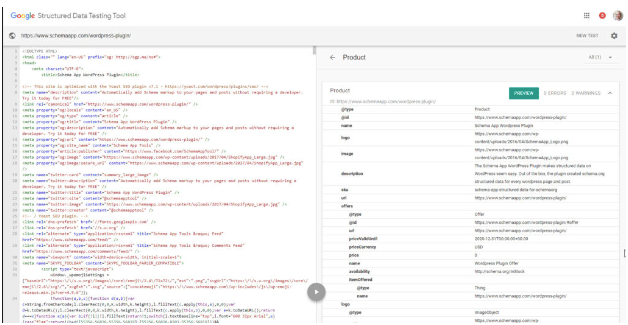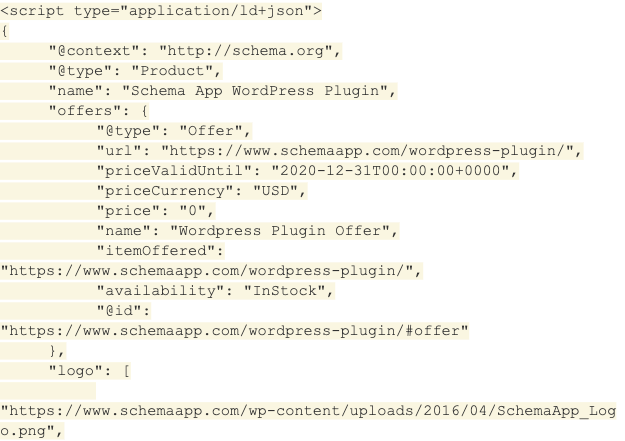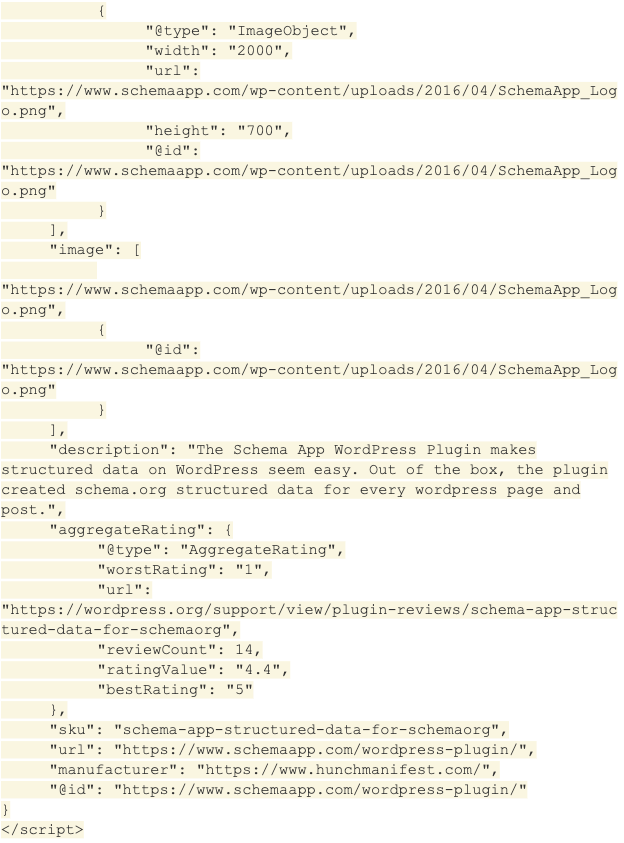Review Snippets are awesome!
When they show up under a search result, you can get significantly higher click-through rates, ranging from 20-82% (as per Google’s latest case studies). While these coveted rich results are commonly found for products, and local businesses, there has been much debate as to whether you can achieve them using third-party review sites (such as Google, Facebook, etc.).
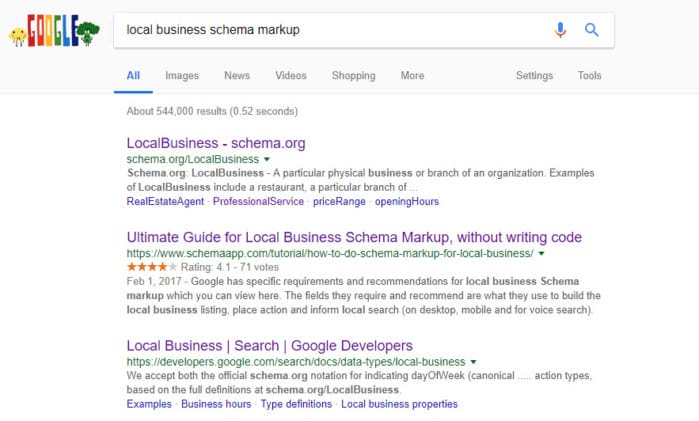
Well, we have good news! Based on evidence over the last few years, we are here to say that YES, you can get Review Snippet rich results for schema.org/LocalBusiness using third-party reviews. While there are some caveats and guidelines you need to follow, it bucks the prevailing advice in the marketplace. Why trust us on this? We’ve helped clients get out of penalties with this recommendation using third-party reviews and wanted to share the learning with you. Let’s dig in.
Google has public documentation for each search engine results page feature, for reviews, you can find it here:
Within which, there are two types of Review features.
- Critic Reviews, this movie critic or a publishing company with professional authors.
- Review Snippet, this is the most common feature coveted by SEO Professionals. It generates a 5-star rating on the SERP pages and reliably provides a 10%+boostt in Click-Through Rates. How does one qualify for these? As my ninth-grade teacher used to quip, “If all else fails, read the instructions”.
Given we are talking about LocalBusiness, let’s see what kind of Schema.org markup qualifies.
We recommend you review the general structured data policies documented by Google Search Documentation. Next, have a look at the fine print in the guidelines.
- Aggregate Rating is recommended for grouping multiple Review Ratings. This is clear.
- Refer clearly to a specific product or service. Simply put, you must either relate the Aggregate Rating to the thing being reviewed using schema.org/aggregateRating or schema.org/itemReviewed.
- “Make sure the reviews and ratings you mark up are readily available to users from the marked-up page. It should be immediately obvious to users that the page has review or rating content.” This is where we see the Structure Data Penalties coming from.
Show Third Party Reviews
If you are marking up third-party reviews, e.g. Google My Business or Yelp, you need to provide a sample of those reviews on the screen to the user. GMB even has an API which you can use to keep the list fresh, rolling through the most recent few reviews. So, in the page content we would show each review with its reviewBody, the rating number out of the scale used, along with the author. For each of those review samples, provide the schema markup for each and include the URL to link to the rating on the third-party site. For good measure, you can add an href link for the customer to follow to read more.
Here is what it would look like on your page:
Equally important, we would show the Aggregate Rating, its ratingCount (or reviewCount) plus the ratingValue. In plain text in this example, you can see 4.7/5 across 20 reviews. By showing this information you are showing the user all the information in addition to informing Google with the schema.org markup. Add the URL to guide web users to the source of the ratings so there is no question as to where the data resides
Continuing with the guidelines:
- “Provide review and/or rating information about a specific item, not about a category or a list of items”, this is straightforward, match the aggregateRating up to the actual content. Although it does raise a point of clarification. The LocalBusiness in question that you’re marking up must be the primary topic of the third-party review site. You cannot use GMB for all your Products, and one Facebook page rating should not be used for numerous subOrganizations and the parent company. If its scope is too broad, don’t use it, if it’s too narrow, the rating is for a Product or Service, you should instead use the rating on the page that speaks to the Product or Service.
- “No reviews are shown for adult-related products or services.” Against the guidelines.
- “Single reviewer name needs to be valid” reviews need to be from real people.
- “Ratings that don’t use a 5-point scale” must include the scale of rating with bestRating & worstRating.
Now, given all that, the misunderstanding for LocalBusiness Review Snippets for third party reviews comes from the LocalBusiness guidelines, in the second tab.
Here it says “Google may display information from aggregate ratings markup in the Google Knowledge Cards. The following guidelines apply to review snippets in knowledge cards for local businesses:” Emphasis should be on Google Knowledge Cards here. This criterion, for aggregate rating information in the right-hand side Knowledge Cards, displays differently than the primary organic results review rich results. These are two different features, and the requirement for the knowledge cards is more strict and SEOs commonly misattribute the restriction to both features.
Basically, the rule is if you are using third-party reviews you are ONLY eligible for review rich results and not star rating in knowledge graph cards. You still have to comply with the other guidelines described above, but it’s totally feasible.
I can also attest to this working for several structured data manual penalties we have fixed for clients. In each case, we update the contents for showing reviews and linking to sources and double-check the third-party reviews are actually about the business.
Given the interest in the topic, I’m surprised by the number of people in the SEO industry who continue to say you cannot use third-party ratings for LocalBusiness. Hopefully, the word gets out and we can all move forward with well-presented, well-sourced and representative schema markup. It would also be nice if Google tweaked the language in Docs.
Reflect in Schema Markup
Product Example
As another example, we have our WordPress Plugin Reviews, which gets a rich result in search, and validates in the SDTT.
Schema Markup on the page is about the product and has the nested Aggregate Rating schema markup that reflects what is on the page.


